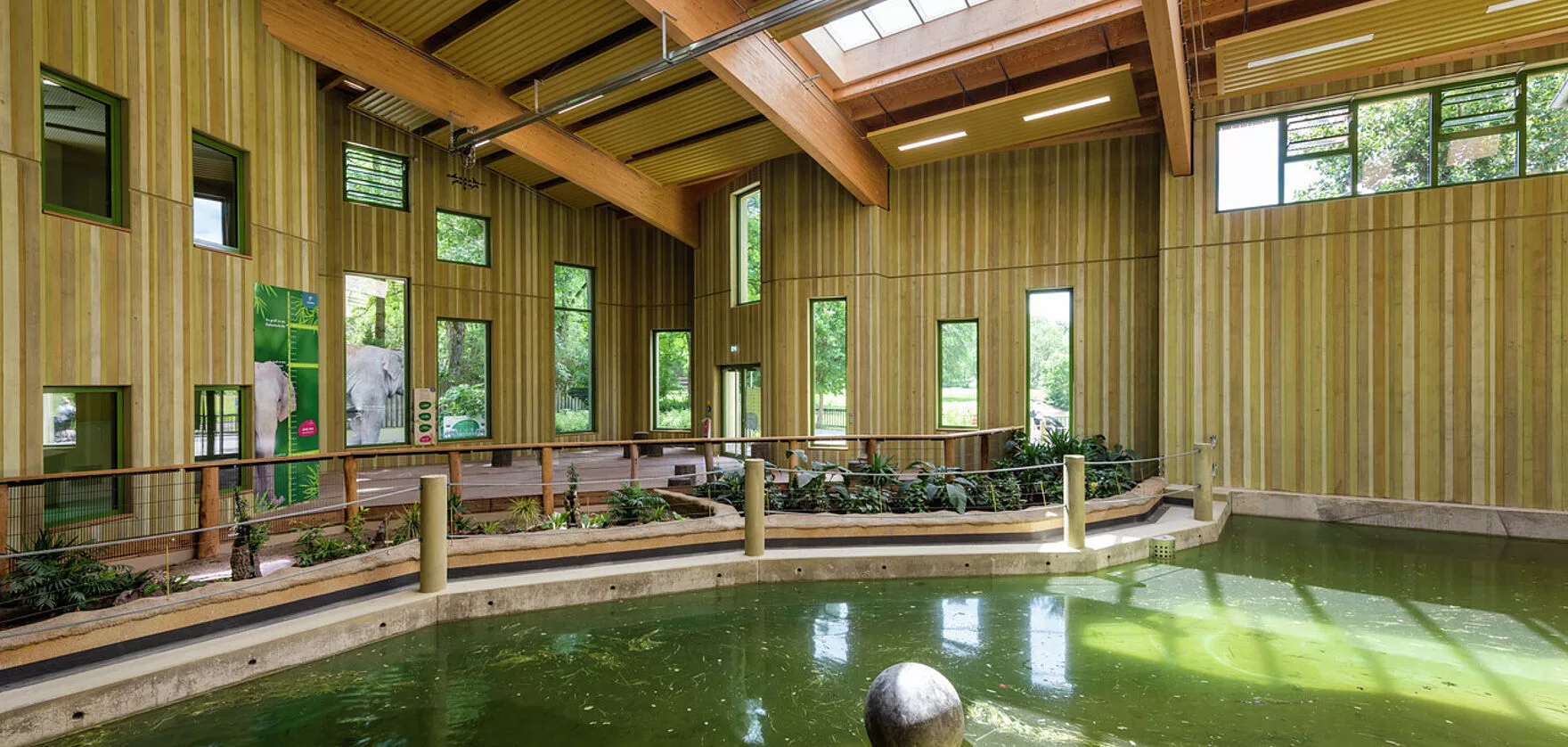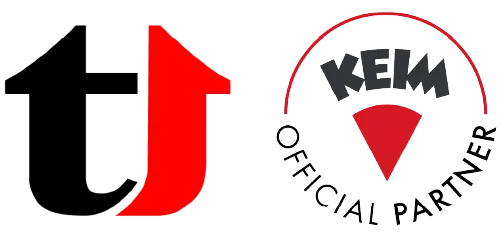Meditree Spa
This spa is crafted in a cozy design language that evokes warmth and relaxation from the very first …

Three shades of green alternate on the wooden façade of the elephant house at the Augsburg Zoo, which opened a few months ago. KEIMFARBEN supplied the coatings – for the façade and also for the concrete walls inside.
In her old age, Targa has to move again. At 64 years old, Targa is one of the oldest elephant cows in the world, but she is still flexible enough to settle into her new home right away. Augsburg Zoo had this built for her and three other female elephants. 7.3 million euros were invested thanks to the great support of donors and sponsors. Targa moved in with her colleague Burma at the beginning of April 2020, and in May two more elephant cows from Berlin joined them. They now have an opulent outdoor area of 4,500 square metres at their disposal, including a bathing pool, plus an indoor area of 1,500 square metres, 600 square metres of which are taken up by the important sand running area alone.
Planning an elephant house is a matter for specialists, after all, all kinds of animal-specific requirements have to be taken into account – for example, the minimum husbandry standards specified in the mammal report of the Federal Ministry of Food, Agriculture and Forestry. In addition to the minimum space requirements, this also includes room temperatures, the size and equipment of the boxes, said sand area and much more. The new elephant sanctuary was planned by the Schwerin-based architects Mikolajczyk Kessler Kirsten, who already have a long list of references for zoo buildings. “We have been working on these special tasks for 29 years and have developed a special design method for them,” explains Frank Kirsten.
In Augsburg, a robust reinforced concrete building was realised with a curved roof structure made of wood. Wood is also used as a facade material – but only where there is no danger of direct contact with the elephants. In these areas, an insulated and back-ventilated vertical formwork made of rough-sawn spruce wood lies above the load-bearing concrete masonry on a two-axis wooden substructure. The liveliness of the facade desired by the architects is achieved through boards of different widths and coloured glazes.
“The large building masses should not dominate the park-like nature,” Kirsten explains. “We were concerned with a harmonious overall effect of the architecture with the surroundings.” Shades of green undoubtedly help, as does a slightly iridescent polychrome. Moreover: “Asian elephants are forest dwellers, so we chose deciduous shades that create a slightly shimmering background noise when they interact”.
Exactly these colours were also required for the interior: “In the sense of a holistic effect, the inside and outside should not differ,” was the architectural idea. And that even includes those wall surfaces that come into direct contact with the animals and are therefore made of exposed concrete. They too were to follow the same colour principle as the wood panelling, and this requirement was implemented with precisely nuanced concrete coatings from the KEIM Concretal-Lasur range. The glazing application allows the character of the concrete to be recognised, modulates it and gives it the iridescent appearance intended by the concept.
Targa, at any rate, appreciates the jungle of colours just as much as the visitors who will now find their way to Augsburg Zoo again after long Corona restrictions.
This spa is crafted in a cozy design language that evokes warmth and relaxation from the very first …
The architectural design of this church embraces a modern style defined by simplicity and visual cla…
The Neo-Renaissance building of the Brno Museum of Applied Arts was built in the 19th century and is…
